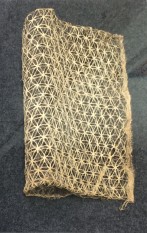

#1
Interview met Sjoerd Knibbeler en Diana Scherer over de expositie
http://fotodok.org/tentoonstelling/3-maart-tm-23-april-2017-reinventing-nature/
Fotodok Utrecht 03.02.2017
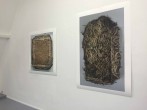

#1
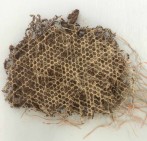

#2
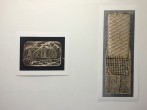

#3
http://fotodok.org/tentoonstelling/3-maart-tm-23-april-2017-reinventing-nature/
(Re)Inventing Nature examines the changing relationship between humans, nature and technology, and will be on display in Utrecht from 3 March to 23 April. The exhibition features work by international photographers including Illka Halso (FI), Sjoerd Knibbeler (NL), Drew Nikonowicz (US), Reiner Riedler (AT) and Diana Scherer (NL).
The line between nature and technology is becoming increasingly blurred: vision and hearing can be restored thanks to brain implants; robots keep lonely seniors company; and beloved family pets can be cloned before they die. At the same time, all this technology seems to be distancing us from nature. What if we stopped seeing technology as the cause of our problems and started looking to it for solutions?
In (Re)Inventing Nature, photographers and image makers explore new relationships with nature. The exhibition also looks at the scientific search for future-proof solutions and alternative ways of experiencing nature such as video games and virtual reality. An increasing part of our life takes place in the virtual world. Screens, simulations and digital versions of reality are everywhere: in our work, leisure and social lives. What impact do these worlds have on our perception of the physical world?
3 March 2017
FOTODOK, Lange Nieuwstraat 7; Utrecht


#1


#2
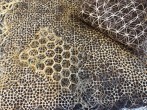

#3
Interwoven – Exercises in rootsystem domestication
Diana Scherer works with wheat, and specifically this crop’s fast-growing root system. By growing the wheat on a subterranean template, she can manipulate the root system to create ‘woven’ patterns. The form of the textile-like material she cultivates is dictated by a 3D-printed template. Seed, soil and water are the only necessary ingredients for the process. When the roots have grown into the desired pattern, Scherer harvests the crop. She cuts the wheat down and dries the root structure. The photographs she takes of the resulting textiles are an integral part of her working process, but she also preserves the actual materials.
http://hetnieuweinstituut.nl/en/interwoven
Museumpark 25
3015 CB Rotterdam
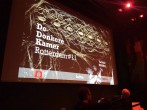

#1
Met Laura Hospes, Herman Cohen Stuart, Martine Stig en Diana Scherer
https://www.nederlandsfotomuseum.nl/tentoonstelling/ddkr-11/
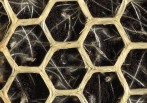

#1
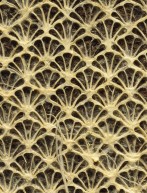

#2
http://thursdaynight.hetnieuweinstituut.nl/activiteiten/material-pioneers
The current cross-pollination between nature, science and creativity is producing radical changes in material reality. An evening for sharing and discussing new developments. Speakers include Olivier van Herpt, winner of the New Material Award, Diana Scherer, the New Material Fellow for 2016 and designer Bart Hess. The discussion will be moderated by Andrea van Pol.
12/01 / 2017 Het Nieuwe Instituut - Museumpark 25 Rotterdam


#1
http://www.avrotros.nl/kunstuur/video/broadcast/kunstuur-dutch-design-week-13-11-2016/
Kunstenaar Diana Scherer won tijdens de afgelopen Dutch Design Week een prijs voor haar werk met plantenwortels. Zij liet de ondergrondse wortels van graan in een bepaald patroon groeien waardoor er stevige matten ontstaan. In het ‘wortellab’ van de Radboud Universiteit onderzoekt zij met biologen en wortelspecialisten naar de toekomst van dit natuurlijke textiel.
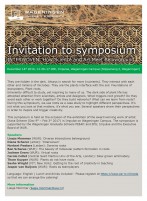

#1
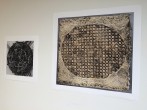

#2
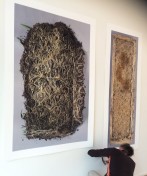

#3
December 14th 2016, 12.30–17.00h,
Impulse, Wageningen Campus
They are hidden in the dark. Always in search for more (nutrients). They interact with each other and millions of microbes. They are the plants interface with the soil. Foundations of ecosystems. Plant roots. Inherently difficult to study, yet inspiring to many of us. The dark side of plant life has attracted attention from scientists, artists and designers. What triggers root growth? Do they avoid each other or work together? Do they build networks? What can we learn from roots? During this symposium, we use roots as a case study to highlight different perspectives. It’s not what you look at that matters, it’s what you see. Several speakers share their perspectives in order to inspire and trigger creativity.
Speakers:
Liesje Mommer (WUR): Diverse interactions belowground
Diana Scherer (artist): ‘Interwoven’
Norbert Peeters (Leiden): Darwins roots
Ben Scheres (WUR): The beauty of molecular pattern formation in roots
Jochem Evers (WUR): Virtual roots
Carole Collet (Central Saint Martins Univ of the Arts, London): Slow grown embroidery
Thom Kuyper (WUR): Plants do not have roots…
Sasha Wright (FIT; New York): Getting to the root of creativity in teaching
Jasper van Ruijven (WUR): Roots as teamplayers


#1
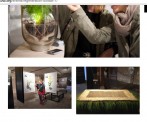

#2
15 December 20.00h. – 21.30h Mediamatic - Dijkspark 6 Amsterdam
Regeneration – Biotalk is a collaboration between Transnatural and Mediamatic and consists of two days and nights full of exciting talks and projects revolving around the topic of restoring and revitalizing our ecology. The Regeneration – Biotalk nights explore the topic of geo-engineering by means of examples from art, design, science and other fields. A showcase and workshop program will accompany the talks that discuss the recent developments in the bio-cultural landscape.
The Regeneration exhibition runs until the 28th of April 2017 at the Transnatural workspace.
Diana Scherer (New Material Fellow Award winner),
prof. dr. Olaf Schuiling (Utrecht University)
Gionata Gatto (GeoMerce project)
